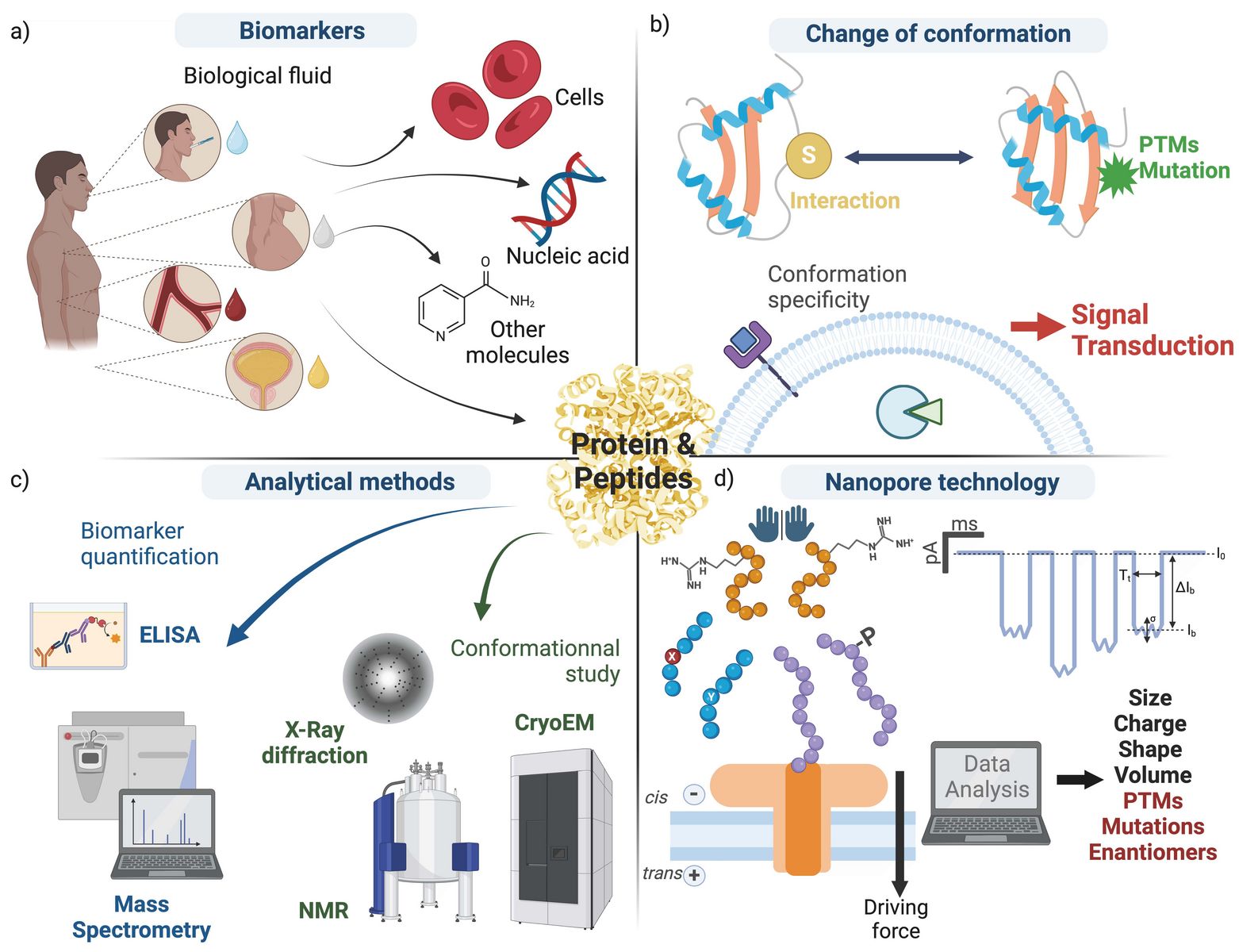Article du mois : Nat. Commun.

Publié le :
15
avr. 2025
Nanopore sensing of protein and peptide conformation for point-of-care applications
Nature Communications. 2025
Abstract
The global population’s aging and growth will likely result in an increase in chronic aging-related diseases. Early diagnosis could improve the medical care and quality of life. Many diseases are linked to misfolding or conformational changes in biomarker peptides and proteins, which affect their function and binding properties. Current clinical methods struggle to detect and quantify these changes. Therefore, there is a need for sensitive conformational sensors that can detect low-concentration analytes in biofluids. Nanopore electrical detection has shown potential in sensing subtle protein and peptide conformation changes. This technique can detect single molecules label-free while distinguishing shape or physicochemical property changes. Its proven sensitivity makes nanopore sensing technology promising for ultra-sensitive, personalized point-of-care devices. We focus on the capability of nanopore sensing for detecting and quantifying conformational modifications and enantiomers in biomarker proteins and peptides and discuss this technology as a solution to future societal health challenges.
Reference
Nanopore sensing of protein and peptide conformation for point-of-care applications.
Ratinho L., Meyer N., Greive S., Cressiot B., Pelta J.
Nat. Commun. 16, 3211 (2025).
